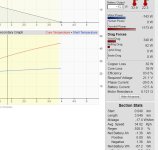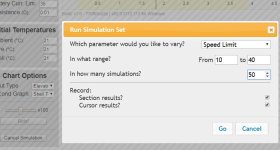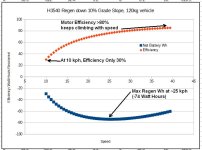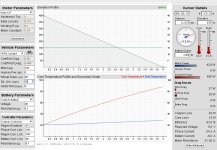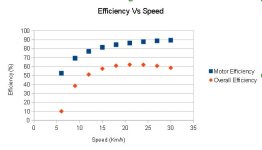Excellent thread, especially start and end, now understanding quite a bit more on regen efficiency, but given the tradeoffs of various systems in term of hill-climbing efficiency, I would appreciate your insights on the overall performance in a mountainous area. The irony is that while it is arguably the most sensible use environment for regen use (both in term of regen and lower brake wearing), it is also where mid-drives or geared motors are typically recommended since they work at maximum efficiency. Hoping to get Justin involved in this, I'll start quoting ebikes.ca (https://www.ebikes.ca/product-info/grin-kits.html#geared-vs-direct-drive):
- Pros of Geared Motor: Better hill climbing efficiency
- Pros of Direct Drive: Regenerative braking
(I understand that mid-drive would stand there as: Even Better hill climbing efficiency -- whatever that means)
You will agree that for whoever wants to purchase his/her first ebike, that is confusing : )
Can you give any number on that? Even theoretical.
Here a more quantitative analysis that I made the other day. For a planned 260km (two days in ebike) trip in a mountainous area in South Italy (
gpx track from Komoot here) I obtain the following:
The assumptions are:
- 250W motor power most of the time, with 80% efficiency (extremely simplified, none of the refined assumption from ebikes.ca)
- speed calculated at constant power (human + motor x efficiency) but imposed to be between 10 and 32 km/h
- when balance speed would be over the max, the extra energy is added as potential for regen braking, diagnostic only (100%), not actually applied
- CdA = 0.5 for air drag, and Crr = 0.005 for rolling friction -- all as simplified friction law
(https://github.com/perrette/ebikesimulator for more info)
What you can see from this figure is that at 80% efficiency the motor would draw 1700Wh from the battery, while 600Wh are lost braking downhill. If 80% from that could be recovered (I finally understood toward the end of this thread that is what we are talking about, and that the confusing 5-20% relate to overall saving in battery usage during a trip, accounting for air drag etc -- that is quite different), that would be significant gain, close to 28% overall.
On the other hand, if instead of using an efficient mid-drive one has to use a less efficient direct drive, that could be entirely offset ! Even without considering the increase in weight (3.5kg for TSDZ2 mid-drive, vs 6-10 kg for DD+controller, right?).
For instance, considering 50% efficiency in the motor leads to 1000Wh additional consumption !! If that were 70% efficiency that would be an additional 250Wh, less than recoverable regen -- good.
So my main question here is:
is there any rule of thumb to calculate motor efficiency, so that the question of mid-drive vs DD+regen-braking in the mountains can be adequately answered? I realize that is exactly the kind of question the ebikes.ca simulator could answer but the many motor types and other options make it a little confusing to me. Can anyone help? Here some quotations from the above thread:
MexicanElmo said:
the motor performs at best efficiency(70-85%) between 1/2 top speed to little below top speed (By top speed I mean it's maximum RPM rating while operated under no load).
justin_le said:
That's only true when you are looking at the full throttle power and efficiency curve. In practice, most people when moving slow are riding part throttle, and the motor efficiency can still be very good (>80%) even at low speeds when you are running at the correspondingly lower power that is required.
Climbing probably means low speed and full power...
TimJ wrote:
my best bet will be to use higher power motors wound for high torque and lower RPM, we would end up with a low top speed motor, but would be great for quick take offs.
I understand this statetement as a hint towards higher motor efficiency.
I was considering the TSDZ2 mid-drive for myself and my g/f to move around this region, but if the regen argument really makes a DD or regen-enabled (no clutch) geared motor look good then I would reconsider. Especially if that allows to have a less intrusive front hub motor instead of giving up on the front gears. Which motor?
EDIT: I just found out that the GMAC 10T has quite a good efficiency over a broad range of speeds, with ebikes.ca simulator giving about 70% at 10 km/h with a 10% slope. For that kind of numbers (hypothesized in the post above, by chance), it seems that the regen would bring more back than is lost from sub-optimal use uphill. That's very interesting. Seems to only exist as rear motor, and it is currently out-of-stock anyways.
Again, any help / advice greatly welcome !!
Thanks



